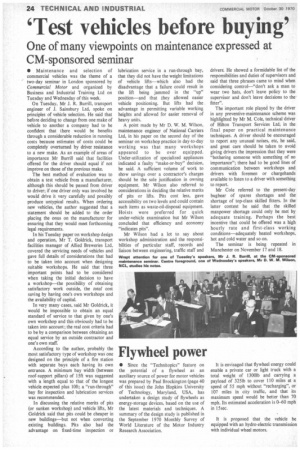Flywheel power
Page 26

If you've noticed an error in this article please click here to report it so we can fix it.
• Since the "Technitopics" feature on the potential of a flywheel as an auxiliary source of power for motor vehicles was prepared by Paul Brockington (page 40 of this issue) the John Hopkins University of Technology, Maryland, USA, has undertaken a design study of flywheels as energy-storage devices, based on the use of the latest materials and techniques. A summary of the design study is published in the September 1970 Monthly Survey of World Literature of the Motor Industry Research Association. It is envisaged that flywheel energy could enable a private car or light truck with a total weight of 1300lb and carrying a payload of 3251b to cover 110 miles at a speed of 55 mph without "recharging", or 107 miles in city traffic, and that its maximum speed would be better than 70 mph. Its estimated acceleration is 0-60 mph in 15sec.
It is proposed that the vehicle be equipped with an hydro-electric transmission with individual wheel motors.








































































































